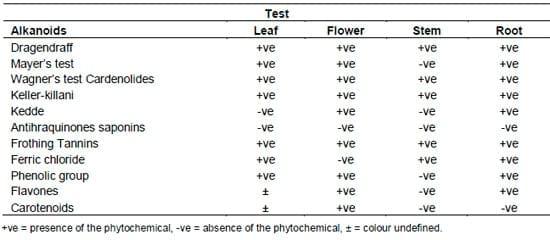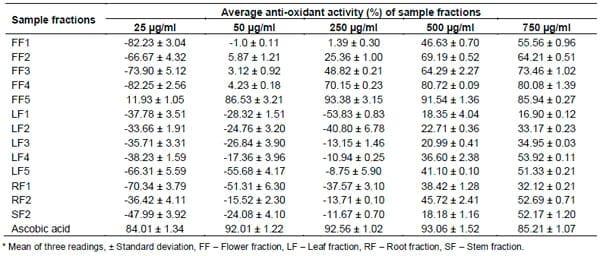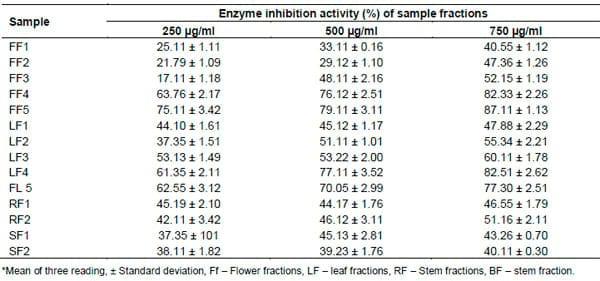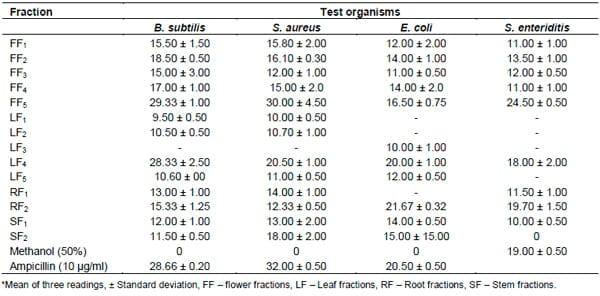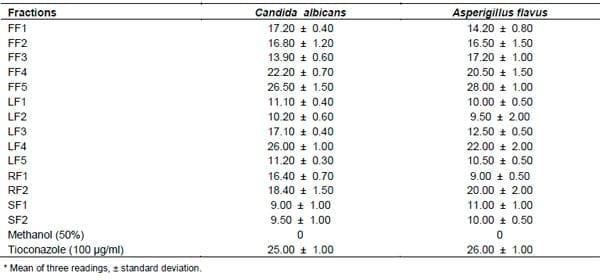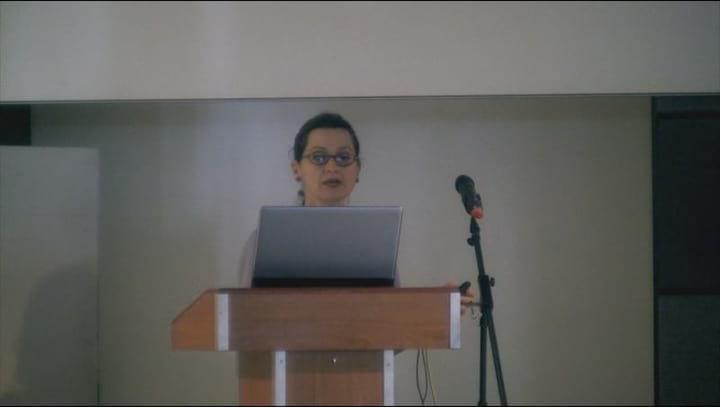INTRODUCTION
It is well known that food which is rich in natural antioxidants leads to a limited incidence of cardio and cerebro-vascular diseases (Hertog et al., 1993). Natural anti-oxidants are present in compounds belonging to several classes of phytochemical components such as phenols, flavonoids carotenoids and tannins (Vincenzo et al., 1999). These compounds are able to scavenge free radicals such as oxygen, hydroxyl or liquid peroxyl radical in plasma (Hertog et al., 1993; Miller et al., 2000a,b,; Frei et al., 1988). Besides, free radical oxidation of the lipid components in foods is a major problem for food manufacturers and thus the early attempts to measure antioxidative activity were mainly focused on lipid protection (Frankel, 1980). So far synthetic materials such as butylated hydroxytoluene (BHT) and butylated hydroxyanisole (BHA) are being applied to reduce problems associated with lipid oxidation in foods. However reports on the harmful effects of these compounds call for research into the use of plant products as alternatives to synthetic additives (Adegoke and Odesola, 1996; Mclellan et al., 1995; Adegoke and GopalaKrishna, 1998). The potent sources of natural antioxidants are spices and herbs (Caraleuro et al., 2006; Helle et al., 2004; Rita et al., 2009; Fasoyiro and Adegoke, 2007). Aframomum danielli is a spice belonging to the genus Aframomum and the family zingiberaceae. The seed of A. danielli plant has been found to contain phytochemicals (Fasoyiro and Adegoke, 2007).
MATERIALS AND METHODS
Chemicals
All chemicals used in this study were of analytical grade, obtained from fluka chemical.
Plant materials
The leaf, flower, stem and roots of freshly harvested plant of A. danielli were collected from a farmer in Ibadan, Oyo State, Nigeria, sun dried for a week and trimmed to remove extraneous materials. The samples were pulverized using a warring blender. The ground spice was sieved (200μm aperture sieve) and packaged in a polythene bag till used.
Phytochemical screening of A. denielli samples
This was carried out on ground spice using the method described by Trease and Evans (2002). Preparation of extracts from powder of A. danielli leaf, flower, stem and root: 200 g of each of the powdered, A. danielli samples was percolated with 1000 mi of 100% methanol at room temperature for 24 h and filtered. The extracts obtained were concentrated in vacuo at 50°C to give the crude extracts of the plant parts.
Table 1. Phytochemical screening of plant parts.
Fractionation of A. danielli leaf, flower, stem and root crude extracts
This was carried out using the method described by Hostettman et al. (1985). Five fractions were collected for each of the leaf and flower, while two were collected for each of the stem and root.
Anti-oxidative activities of A. danielli leaf, flower, stem and root of purified fractions
These were determined by 1,1,-diphenyl-1, 2-picrylhydrazyl (DPPH) assay as described by Aderogba et al. (2004). Ascobic acid was used as positive control.
Lipoxygenase (15-LO) enzyme inhibition 15
15-Lipoxygenase enzyme was used for peroxidation of linoleic acid as described by Lyckander and malternel (1992).
Anti-microbial effect of A. danielli leaf, flower, stem and root fractions
This was carried out by Agar diffusion method (Hugo and Russel, 1983). The test organisms were: Bacillus subtilis, staphylococcus aureus, Escherichia coli ,Salmonella enteriditis, Candida albicans and Aspergillus flavus. Ampicillin (100 ppm) and Tioconazole (100 ppm) were used as controls.
RESULTS AND DISCUSSION
The phytochemical screening of A. danielli leaf, flower, stem and root revealed the presence of phytochemicals which are of anti-oxidative and anti-microbial interest. The result of phytochemical screening is presented in Table 1. A. danielli parts tested positive to Meyer's test and confirmatory Dragendroff's test indicated the presence of alkaloids. The flower and roots were tested positive for cardenolides; Keller-killanis and Kede's test indicated the presence of sugar as glycosides. Flavones (flavonoids) were present in flower and root but not as intense in leaf.
Anti-oxidant activities (%) on DPPH free radical
The result of the anti-oxidant activities of the fractions is given in Table 2. Flower fraction FF5 had average anti-oxidant activities of 93.38 ± 3.15, 91.54 ± 1.36 and 85.94 ± 0.27% at concentrations of 250, 500 and 750 μg/ml respectively. The leaf, stem and root fractions are not so potent in scavenging DPPH radicals; the leaf, stem and root showed maximum anti-oxidant activities of 53.92 ± 0.11, 53.84 ± 0.39 and 52.69 ± 0.71% respectively at concentrations of 750 μg/ml on DPPH free radicals. The activities in leaf, stem and root fractions in this assay may be caused by lack of hydrogen donating capacity of the leaf, stem and root.
Lypoxygenase enzyme (15-LO) inhibition by leaf, stem and root fractions (Table 3)
The leaf fractions showed higher anti-oxidant activities towards 15-LO enzyme in comparism to DPPH radicals. The flower fraction FF5 followed closely by leaf fraction LF4 had high antioxidant activities values of 87.11 ± 5.13 and 82.51 ± 2.62%, respectively. This could be due to the fact that involvement of proton donation from the active compounds may be less important for 15-LO inhibition (Lyckander and Malternal, 1992).
Table 2. Anti-oxidant activities of purified fractions of A. danielli flower, leaf, stem and root on 1,1-diphemyl 1,2 picrylhydrazy (DPPH) free radical at various concentrations.
Table 3. Inhibition of 15-lipoxygenase (15-LO) enzyme by A. danielli flower leaf stem and root fractions.
Zones of inhibition of A. denielli leaf, flower, stem and root fractions on food born pathogens
Table 4 shows the zones of inhibition of the partially purified fractions A. danielli plant on some food borne pathogens in comparison with ampicillin. Flower fraction FF5 had the highest antimicrobial activity on B. subtilis, S. aureus and Salmonella enteridits among all the fractions. The flower fraction FF5 and root fraction RF2 had higher antimicrobial activity on S. enteridits in comparison with ampicillin. Root fraction RF2 had higher activity on E. coli compared to ampicillin, leaf fraction F1 had the least activity on the pathogenic bacteria. Table 5 shows the zones of inhibition of A. danielli plant parts on Candida albicaus and A. flavus. Flower fraction FF5 had higher antimicrobial activities on C. albicans and A. flavus compared to Tioconazole. Stem fraction SF1 and root fraction RF1 had the least activities on C. abbicaus and flavus, respectively.
Table 4. Zones of inhibitions (mm) of flower, leaf, root and stem fractions on some food borne pathogens at 750 μg/ml.
Table 5. Zones of inhibition (mm) of A. danielli flower, leaf root and stem fractions on A. flavus and C. albicans at 750 μg/ml.
Conclusion
This study had been able to highlight some of the phytochemical components present in the leaf, flower, stem and root of A. danielli plants. This showed that this plant parts could serve as antioxidant and anti-microbial agent in food when purified and concentrated.
ACKNOWLEDGEMENTS
The authors thank Dr. B. Torto of ICIPE-African Insect Science for Food and Health Nairobi, Kenya for his interest and encouragement in this research work.
REFERENCES
Adegoke GO, Gopalakrishina AG (1998). Extraction and idenyification of antioxidants from the spice Aframomom danielli. J. Am. Oil Chem. Soc., 75: 1047.
Adegoke GO, Odesola BA (1996). Storage of maize and cowpea and inhibition of microbial agents of biodeterioration using the powder and essential oil of lemon grass (Cymbopogon citratus) Int. Biodeter Biodegra, 37: 81.
Cavaleiro C, Pinto E, Goncalves MJ, Salgneiro L (2006). Antifungal activity of Juniperus essential oils against dermatophyte, Aspergullus and candida strains. J. Appl. Nucrobiol., 100: 133-1338.
Fasoyiro SB, Adegoke GO (2007). Phytochemical characterization and the antimicrobial property of Aframomum denielli. Afr. J. Agric. Res., 2(3): 076-079.
Frankel EN (1980). Lipid oxidation Prog. Lipid Res., 1980 19: 1-22.
Frei B, Stocker R, Ames BN (1988). Antioxidant defences and lipid peroxidation in human blood plasma Proc. Natl. Acad. Sci. U.S.A., 85: 9748-9752.
Helle W, Anne BS, Karl EM (2004). Antioxidant activity in extracts from coriander, Food Chem., pp. 293-297.
Hertog MGL, Feskens EJM, Hollman PC, Kantan MB, Krombhout D (1993). Dietary antioxidant flavonoids and risk of coronary heart diseases; the Zutphen elderly study. Lncet 1993, 342: 1007-1011.
Hostettmam K, Hostattman M, Marston A (1985). Preparative chromatography techniques. Application In: natural product isolation. Spring-veleng Pub., Berhin, pp. 65-145.
Hugo and WB, Russel AD (1983). Pharmaceutical Microbiology, 3rd Ed. Blackwell Sci. Pub., pp. 140-163.
Lyckander IM, Matternal KE (1992). Lipophyllic flavonoids from orthosiphonspicatus as inhibitors of 15 – lipoxygenase. Acta Pharmaceutica Nordica, 4: 159-166.
Aderogba MA, Okoli EK, Adelanwa tA, Obuotor EM (2004). Antioxidant properties of the Nigerian Piliostigma Species. J. Biol. Sci., 4(4): 501-503.
Mclellan MR, Kine RW, Lee CY, Long TM (1995). J. Food Proc. Preservation 19:1
Miller HE, Rigelhof F, Marquart, L, Parkash, A, kanter M (2000). Cereal Foods World, 45(2): 59-63.
Miller HE, Rigelhof F, Marquart L, Prakash A, Kanter M (2000). J. Am. Coll. Nutr., 19(2): 3125-3195.
Rita P, Giuseppina B, Rossalia F, Rosa CB, Fortuna C, Alberto R (2009). Bergamot; A source of natural antioxidant for functionalized fruit juices. Food Chem., 112: 545-550.
Trease G, Evans SM (2002). Pharmacognosy, 15th Ed. Bailer, Tindal, London.Vincero Foghano, Veronica Verde, Giacomino Randazzo, and Alberto Ritieni (1999) Method for measuring Antioxidant Activity and its application to Monitoring the Antioxidant capacity of Wires. J. Agric. Food Chem., 47: 1035-1040.
